Market multiples at a glance


I. The transactional environment
The environment for corporate transactions in Switzerland
Trading volume (published) in Switzerland :
- Generally speaking, the relatively stable political framework and business climate contribute to a high level of investor confidence. Social regulations are flexible for entrepreneurs, and tax and interest rates are generally competitive with neighbouring countries.
- Switzerland confirms its status as a «key player»In terms of technological innovation, a sector that has played a crucial role in the Group's business activities, the Group has played a key role. M&A in recent years and continues to show promising prospects for the future. In particular, the country is cultivating its lead in high value-added businesses. The success of Swiss companies is due in particular to their highly qualified human capital.
- In 2024, 519 corporate transactions were announced in Switzerland, a slight increase on 2023, when 509 transactions were reported. However, this volume of announced transactions is down on 2022 (591 published transactions), which was a record year due in particular to a rebound effect following Covid-19.
- The M&A market in 2024 is likely to be dominated by the technology sector, with 138 deals reported. It is followed by the healthcare and industrial sectors, with 94 and 89 deals respectively announced by 31 December 2024.
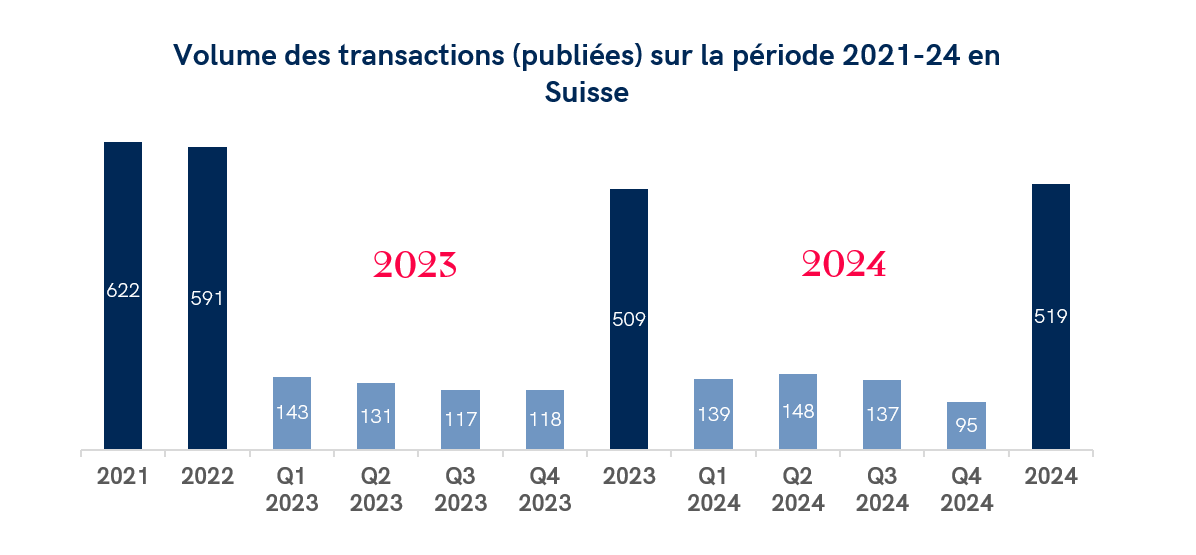
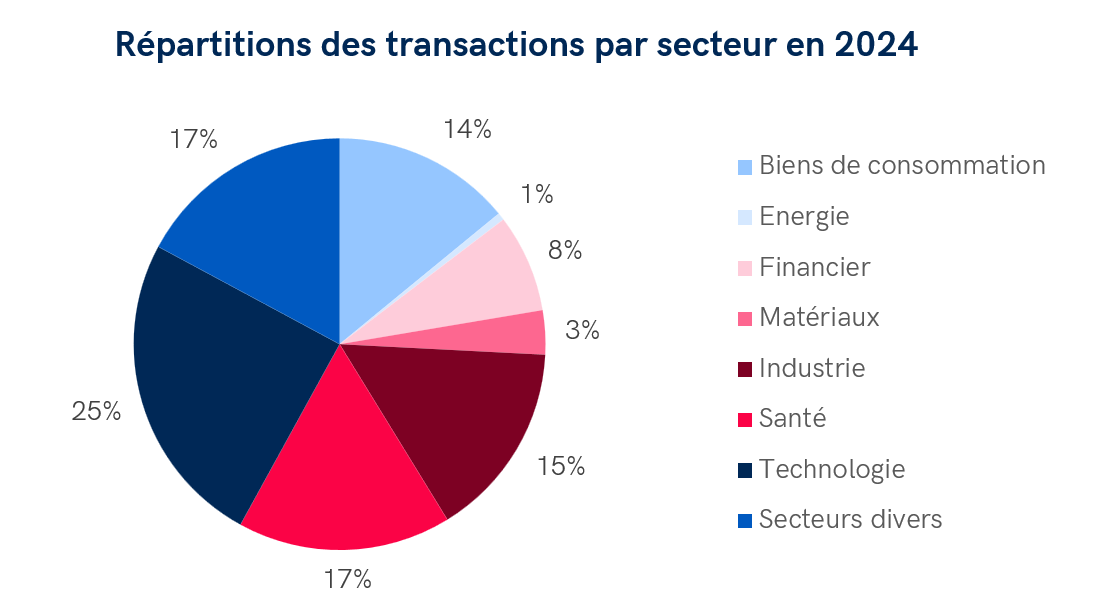
Source : Refinitiv
II. Sector summary at a glance«
The multiples presented below are based on the following criteria: public companies; geographical sector (Switzerland and Western Europe). Unrepresentative stocks have generally been excluded from these analyses. (Source : Refinitiv).
EV (Enterprise value): enterprise value excluding free cash flow and/or debt
Energy sector
Median multiples in Switzerland and Western Europe over 4 years
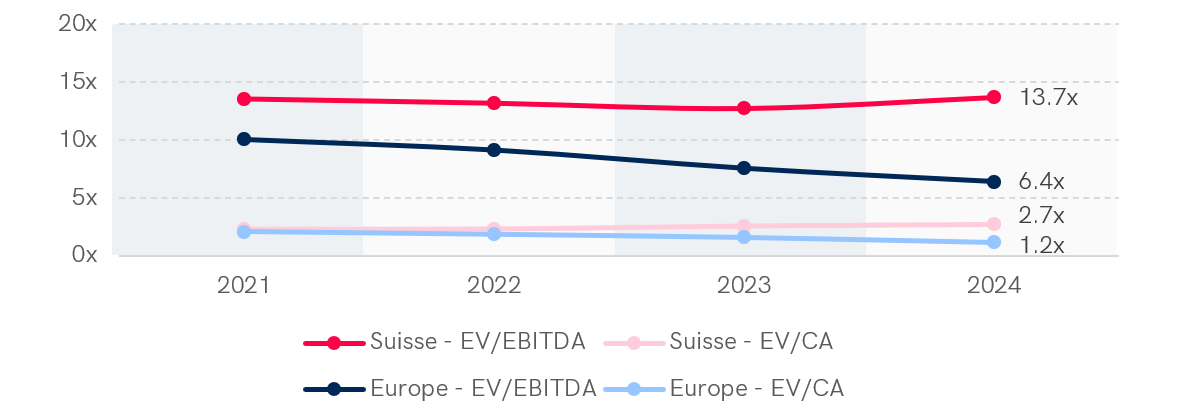
Energy
Economic profitability in Switzerland and Western Europe over 4 years
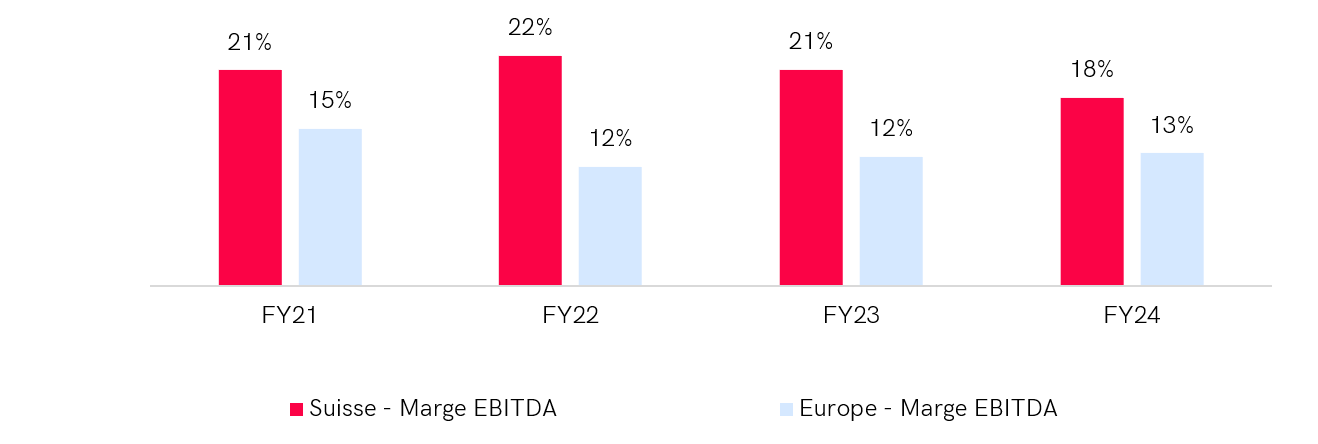
Materials sector
Median multiples in Switzerland and Western Europe over 4 years
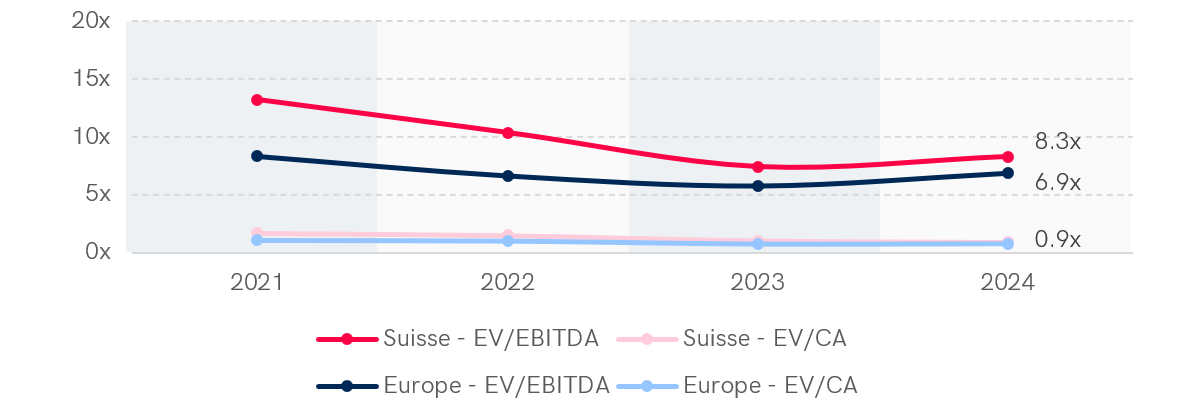
Materials
Economic profitability in Switzerland and Western Europe over 4 years

Industry sector
Median multiples in Switzerland and Western Europe over 4 years
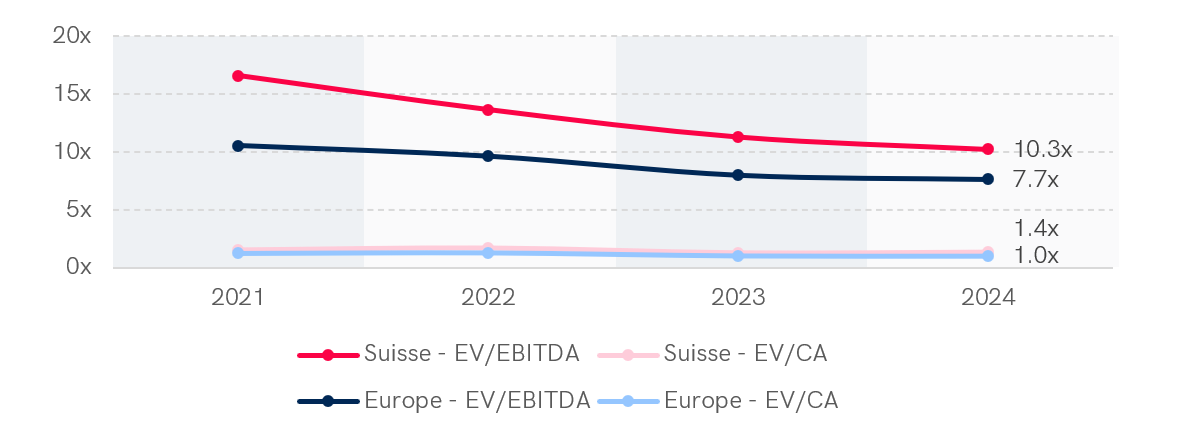
Industry
Economic profitability in Switzerland and Western Europe over 4 years

Health sector
Median multiples in Switzerland and Western Europe over 4 years

Health
Economic profitability in Switzerland and Western Europe over 4 years

Recurring consumer goods sector
Median multiples in Switzerland and Western Europe over 4 years

Recurring consumer goods
Economic profitability in Switzerland and Western Europe over 4 years

Occasional consumer goods sector
Median multiples in Switzerland and Western Europe over 4 years

Occasional consumer goods
Economic profitability in Switzerland and Western Europe over 4 years

Financial sector
Median multiples in Switzerland and Western Europe over 4 years
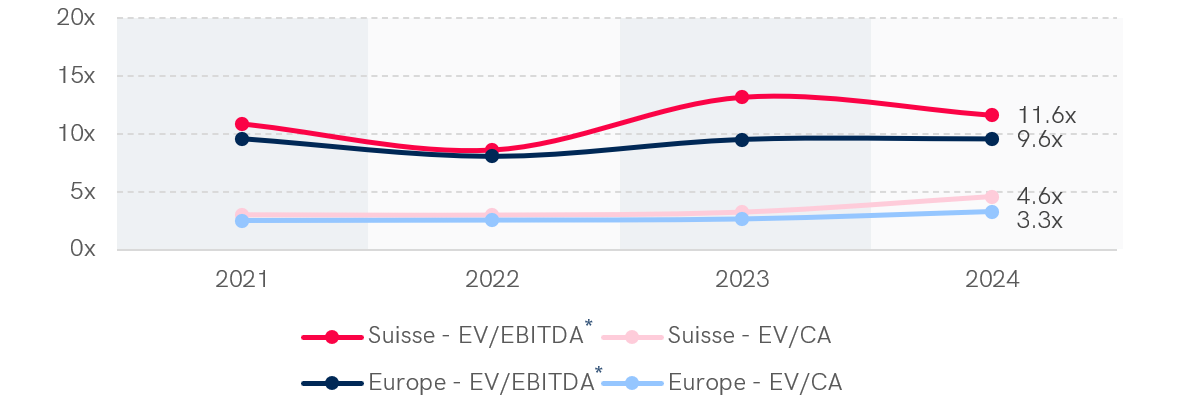
Finance
Economic profitability in Switzerland and Western Europe over 4 years
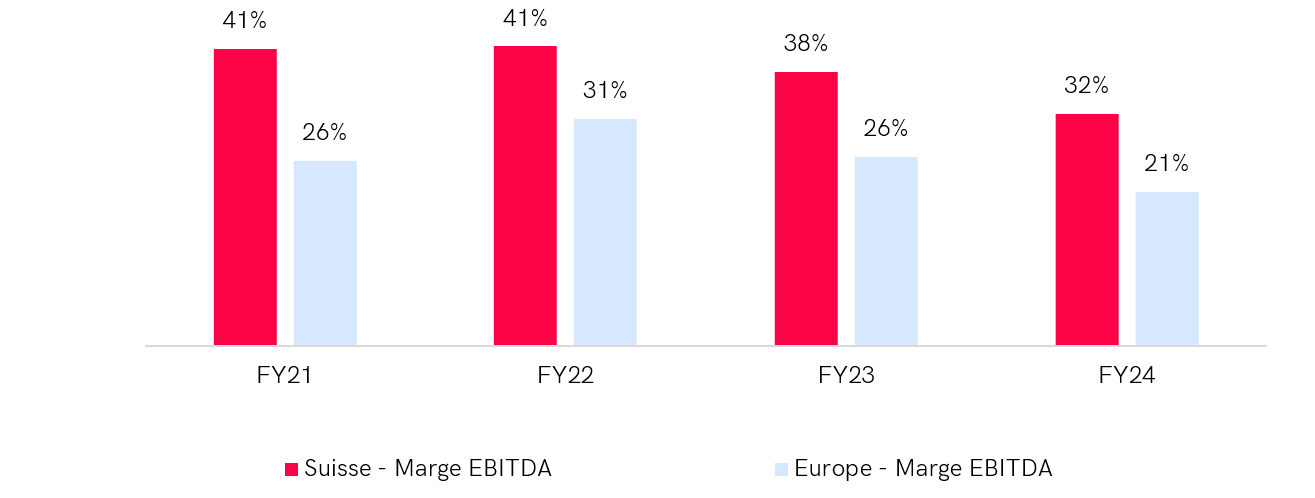
Technology sector
Median multiples in Switzerland and Western Europe over 4 years

Technologies
Economic profitability in Switzerland and Western Europe over 4 years

Service sector
Median multiples in Switzerland and Western Europe over 4 years
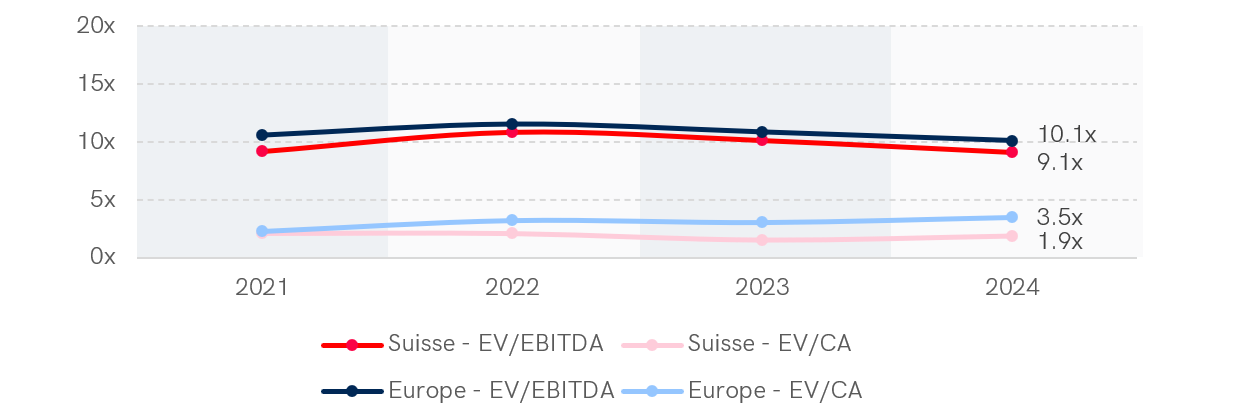
Services
Economic profitability in Switzerland and Western Europe over 4 years
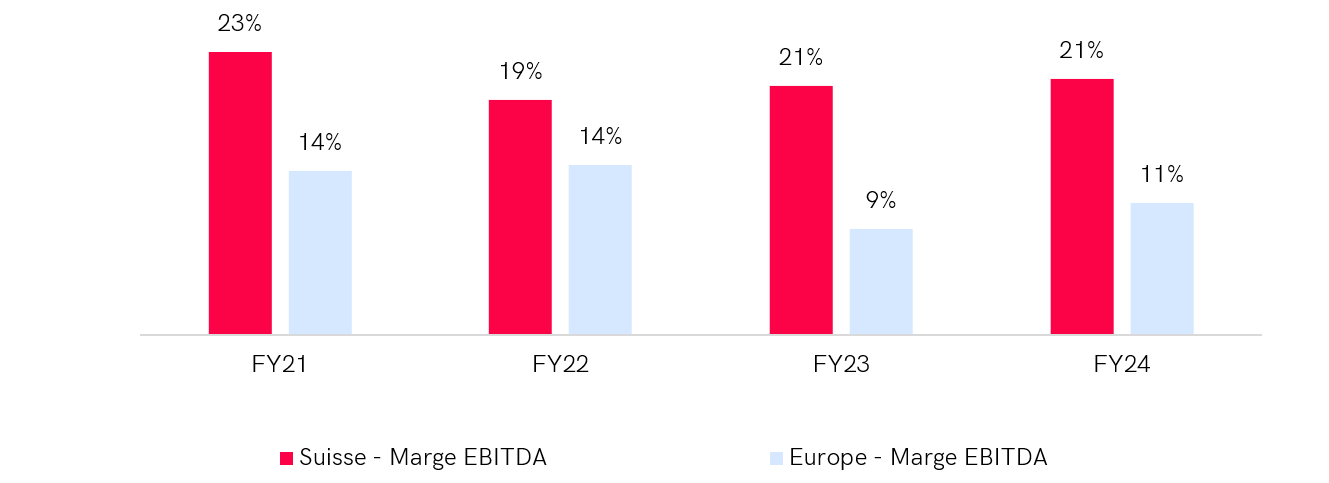
III. Outlook
Confirmed recovery in transaction activity
1. Gradual recovery
-
-
-
- According to Argos Index®, EV/EBITDA multiples reached 9.5x in Q3 2024 after three years of decline, However, EV/EBITDA multiples for SMEs in Switzerland are significantly lower (6.5x on average).
-
-
-
-
-
- L’Argos Index® is a quarterly index that measures the valuation of unlisted mid-market(1) SMEs in the eurozone, based on transaction multiples. Launched in 2006 by Argos Wityu and Epsilon Research, it presents the median of the historical EV/EBITDA multiple over six «rolling» months.
-
-
-
- Valuation differentials are gradually narrowing, with multiples becoming less polarised and extremes becoming rarer, reflecting an apparent stabilisation in the market.
-
-
-
- The gap between the multiples paid by private equity funds and strategic buyers is now 1.3x EBITDA, confirming a post-Covid structural change. Between 2004 and 2020, strategic buyers were occasionally paying higher multiples than private equity funds (0.2x more). Since 2021, these funds have been paying 0.9x more on average, thanks to the availability of capital and the low cost of debt.
-
-
2. New opportunities
-
-
-
- Private equity funds focus on quality assets, willing to pay premiums despite a relatively uncertain macroeconomic environment.
-
-
-
- Opportunities seem to be developing in sectors such as energy, infrastructure and insurance.
-
-
-
-
-
- Investors are adopting diversified strategies, including private club deals and tailored bank debt (acquisition debt).
-
-
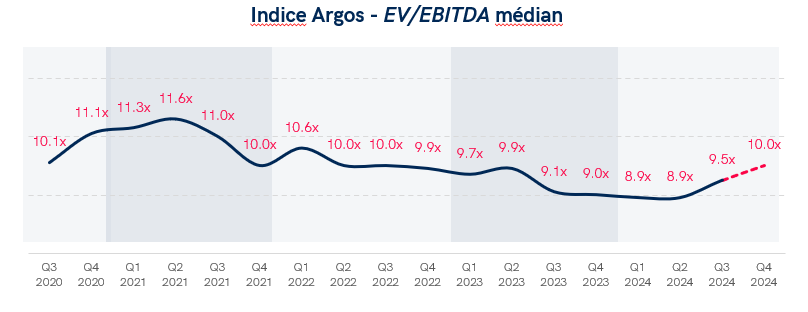
Source: Argos Wityu (20.11.2024). Argos Index® 3rd Quarter 2024.
Sources :
- Mid-market: refers to medium-sized companies, with an enterprise value generally between MEUR 15 and MEUR 500.
Latest news

Votation populaire du 30 novembre 2025 : initiative pour l’avenir
Le 30 novembre 2025, les électeurs suisses seront appelés à se prononcer sur une initiative visant à instaurer un impôt fédéral de 50 % sur les successions et donations dépassant 50 millions de francs. Pensée pour financer la transition écologique, cette mesure soulève des questions concrètes pour les familles propriétaires de PME, les entrepreneurs et les détenteurs de patrimoine important.

Reform of the taxation of home ownership
Swiss property tax reform: abolition of rental value, new deduction rules, tax on second homes. Find out what our tax experts have to say.

Annual VAT reconciliation
Annual VAT reconciliation is compulsory for all taxable businesses in Switzerland. Find out why it's essential, what the deadline is and how our experts can help you avoid errors and penalties.